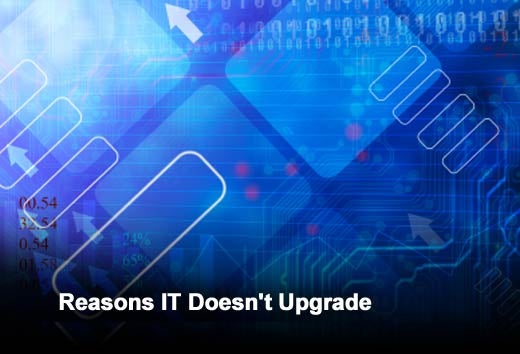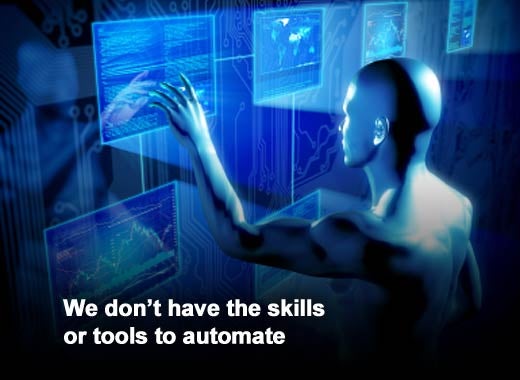Why do large organizations delay in migrating their users to the latest Windows operating system (OS)? According to Sumir Karayi, CEO of 1E, they often hear five major excuses that prevent IT from staying current in terms of the operating system, and many other technologies. This understanding comes from the work 1E has done with more than 1500 organizations over the last 15 years, and offers insight to combat these commonly overheard defenses.
Click through for five common excuses for why IT is unable to stay current in terms of the operating system, and many other technologies, as identified by Sumir Karayi, CEO of 1E.
The “way it’s always been done” is not always the best way. Senior IT managers may consider manual, individual PC migrations by an IT technician the best process for a company-wide OS migration. The truth is that this approach introduces risk, as each PC is a custom job, where the idiosyncrasies of each technician result in different outcomes. Manual migrations are also prohibitively time consuming for both IT and the user, each often wasting half to a whole day discussing priorities, migrating at an agreed time, reinstalling applications and fixing any issues. For an organization with 10,000 users, as many days (or longer) may be spent migrating. Automation presents an alternative, one that enables the user to self-serve the new OS and applications.
For those with a fear of systematically rendered errors, such as thousands of PCs left inoperable at once, consider that this type of error and its prevention are a well-understood science. Data from systems management solutions can identify variances in configuration across the PC estate, simple logic can be built in to check for known/unknown configurations, backups can be performed before changes are implemented, and remedial actions can be automated. These steps ensure the automation itself is rested and a rollout strategy is devised to minimize risk.
Recent MIT Sloan research stated that an organization with 10,000 people has, on average, 300 concurrent IT projects at any given time. This is a matter of business priority as much as it is a lack of IT resources. The business wants new IT systems to make it grow faster or reduce costs, two categories where OS upgrades don’t necessarily fit (despite what Microsoft may tell you!). When IT does have that rare spare capacity, the projects that win are generally business solutions.
Unless an OS migration can be a business-as-usual (BAU) activity, it will be generally be deprioritized, and the organization will continue to struggle to stay current. What’s ironic is that many of the business solutions that the organization wants and needs would work better with the new OS, or may even be dependent on it.
Unfortunately, the perceived benefits of a new OS are generally obvious only to IT teams. How can an organization be prepared to pay for something it does not understand to be hugely beneficial? How can they allow budget when the project cost is significantly higher than most other IT projects?
IT teams should consider two tactics that can help build the business case for a migration. First, reduce costs. Secondly, learn to justify projects financially. This second process is easier said than done; 1E built a new business analysis team from the best experts around, and tasked them with helping clients demonstrate the value of a migration project, for example, to the business.
Think about your last migration project. Was it part of a larger project that also replaced all the hardware, upgraded servers and Active Directory, deployed one or two new organization-wide applications and performed a general spring clean? If you answered yes to even half of this list, then the project was too complex. OS migrations should be discrete BAU projects, without all these interdependencies that simply over-complicate the project by technology, process and resources involved.
Today, new OS’s tend not to require faster hardware (unless it is very old), removing the need for new PC hardware to be installed. Additionally, tools are available to fully automate the migration independently of other projects, and there is much greater flexibility with Microsoft’s backend infrastructure like AD, removing the need for a spring clean. Keep the scope of the project as narrow as possible, and focus on speed through full automation to get over this hurdle of perceived complexity.
Most organizations don’t leverage the computing power at-hand to automate IT change, such as OS migrations. While IT still has to send an engineer to every desk, migrations and other large-scale IT rollout projects will remain complex, time-consuming, resource-intensive and risk failure. Ideally, the user should initiate the process, not IT, and everything that follows should be automatic. Achieve this, and you can achieve true IT agility; automating your OS migrations empowers you to automate every other distributed management task. Zero-touch migrations are possible, as demonstrated in this eBook.








